Fire exit signs are essential in any non-domestic building, but many people are unsure whether they must be photoluminescent – often called glow-in-the-dark – to comply with UK fire safety requirements. This guide explains when photoluminescent fire exit signs are needed, how they work, and where they offer the greatest benefit.
Construction sites are among the most hazardous work environments, with constantly changing conditions and multiple risks present at any given time. Proper safety signage isn't just good practice—it's a legal requirement that can mean the difference between a safe worksite and a costly accident. This comprehensive guide covers everything you need to know about construction site safety sign requirements in 2025.
Legal Framework: What You Must Know
The Construction (Design and Management) Regulations 2015 (CDM 2015)
Under CDM 2015, principal contractors have a legal duty to ensure adequate welfare facilities and safety measures are in place, including appropriate signage. This regulation specifically requires:
- Clear identification of hazards and risks
- Proper warning signs for dangerous areas
- Information signs for emergency procedures
- Directional signage for safe routes and exits
Health and Safety at Work Act 1974
This foundational legislation places a general duty on employers to ensure the health, safety, and welfare of employees and visitors. For construction sites, this translates to:
- Providing adequate safety information through signage
- Ensuring signs are visible, legible, and appropriately positioned
- Regular maintenance and replacement of damaged signs
The Safety Signs and Signals Regulations 1996
These regulations implement European Directive 92/58/EEC and mandate the use of safety signs where risks cannot be adequately controlled by other means. Key requirements include:
- Signs must comply with BS 5499 and ISO 7010 standards
- Appropriate colours, symbols, and text must be used
- Signs must be maintained in good condition
- Workers must receive information about sign meanings
Essential Safety Signs Every Construction Site Must Display
1. Site Access and Perimeter Signs
Mandatory Signs:
- "Authorised Personnel Only"
- "Hard Hats Must Be Worn"
- "High Visibility Clothing Must Be Worn"
- "Safety Boots Must Be Worn"
Warning Signs:
- "Construction Site - Keep Out"
- "Danger - Men at Work"
- "Caution - Heavy Plant Operating"
2. Personal Protective Equipment (PPE) Signs
PPE signage is crucial for compliance with the Personal Protective Equipment at Work Regulations 2022:
- Eye protection mandatory signs
- Hearing protection required signs
- Respiratory protection signs
- Hand protection mandatory signs
3. Hazard-Specific Warning Signs
Different construction activities require specific warning signage:
Excavation Work:
- "Danger - Deep Excavation"
- "Caution - Uneven Ground"
- "Warning - Overhead Cables"
Lifting Operations:
- "Danger - Crane Operating"
- "Caution - Suspended Loads"
- "Exclusion Zone - Keep Clear"
Hot Work:
- "Danger - Welding in Progress"
- "Caution - Hot Surface"
- "No Smoking - Flammable Materials"
4. Emergency and Fire Safety Signs
Fire safety signage must comply with BS 5499 standards:
- Fire assembly point signs
- Fire exit signs (including photoluminescent options for low-light conditions)
- Fire extinguisher identification signs
- Emergency contact information signs
5. Traffic Management Signs
For sites with vehicle access:
- Speed limit signs
- "Stop - Banksman Required"
- Pedestrian crossing points
- Vehicle exclusion zones
Material Selection: Choosing the Right Signs for Construction Environments
Outdoor Durability Requirements
Construction sites present unique challenges for signage materials:
Aluminium Composite Signs:
- Excellent weather resistance
- 5-year warranty for UK weather conditions
- Suitable for permanent installations
- Won't fade or deteriorate in harsh conditions
Rigid Plastic Signs:
- Cost-effective for temporary installations
- Good durability for medium-term use
- Available in 1mm and 2mm thickness options
Self-Adhesive Vinyl:
- Ideal for smooth surfaces
- Quick installation
- Suitable for temporary signage needs
Photoluminescent Options
For areas with limited lighting or emergency situations:
- Photoluminescent rigid plastic (1.3mm)
- Glow-in-the-dark self-adhesive vinyl
- Essential for fire exit routes and emergency equipment locations
Compliance Standards: BS 5499 and ISO 7010
BS 5499 Requirements
British Standard 5499 specifies:
- Correct colours for different sign types
- Symbol design and proportions
- Text requirements and font specifications
- Installation height and positioning guidelines
ISO 7010 International Standards
ISO 7010 provides globally recognised safety symbols:
- Consistent symbol design across industries
- Clear meaning regardless of language barriers
- Regular updates to reflect new hazards and technologies
Site-Specific Considerations
Temporary vs. Permanent Signage
Temporary Signs (Project Duration):
- Rigid plastic or vinyl options
- Cost-effective for single-project use
- Easy installation and removal
Permanent Signs (Multi-Project Sites):
- Aluminium composite recommended
- Long-term durability
- Better return on investment
Positioning and Visibility
Effective sign placement requires consideration of:
- Eye-level positioning (1.4m to 2.1m height)
- Clear sightlines free from obstructions
- Adequate lighting for visibility
- Weather protection where necessary
Multi-Language Requirements
For sites with international workers:
- Symbol-based signs preferred
- Multi-language text where necessary
- Pictorial representations for complex procedures
Legal Consequences of Non-Compliance
HSE Enforcement Actions
The Health and Safety Executive can take various enforcement actions:
Improvement Notices:
- Requirement to remedy deficiencies
- Specified timeframe for compliance
- Potential for follow-up inspections
Prohibition Notices:
- Immediate cessation of dangerous activities
- Cannot resume until issues resolved
- Significant project delays possible
Financial Penalties
Non-compliance can result in:
- Unlimited fines for serious breaches
- Individual prosecution of directors and managers
- Increased insurance premiums
- Potential civil liability claims
Reputational Impact
Poor safety records can affect:
- Future contract opportunities
- Client relationships
- Insurance coverage availability
- Company reputation in the industry
Best Practices for Implementation
1. Conduct Regular Site Surveys
- Weekly sign condition inspections
- Immediate replacement of damaged signs
- Updates for changing site conditions
- Documentation of sign locations and conditions
2. Staff Training and Induction
- Comprehensive site induction including sign meanings
- Regular toolbox talks on safety signage
- Multi-language training materials where needed
- Testing of understanding before site access
3. Maintenance Programmes
- Scheduled cleaning of signs
- Weather damage assessments
- Replacement schedules for temporary signs
- Emergency replacement procedures
4. Documentation and Records
- Sign installation records
- Training attendance logs
- Inspection and maintenance records
- Incident reports related to signage issues
Working with Professional Sign Suppliers
What to Look for in a Supplier
Quality Assurance:
- BS 5499 and ISO 7010 compliance certification
- Product liability insurance coverage
- Quality control processes
- Warranty provisions
Technical Expertise:
- Understanding of construction industry requirements
- Advice on material selection
- Custom sign design capabilities
- Installation guidance
Service Standards:
- Fast turnaround times for urgent orders
- Bulk discount availability
- Reliable delivery schedules
- Technical support and advice
Future-Proofing Your Signage Strategy
Emerging Technologies
- QR codes linking to detailed safety information
- Digital signage for dynamic messaging
- Smart signs with environmental sensors
- Integration with site management systems
Regulatory Changes
Stay informed about:
- Updates to CDM regulations
- New HSE guidance documents
- Changes to British and international standards
- Industry best practice developments
Conclusion
Proper construction site safety signage is not just a legal requirement—it's an essential component of effective risk management. By understanding the legal framework, selecting appropriate materials, and implementing comprehensive signage strategies, construction companies can create safer work environments while ensuring full regulatory compliance.
Remember that signage requirements can vary based on specific site conditions, project types, and local authority requirements. When in doubt, consult with safety professionals and experienced sign suppliers to ensure your signage meets all necessary standards.
For expert advice on construction site safety signage and BS 5499 compliant products, contact our team of specialists who understand the unique challenges of the construction industry.


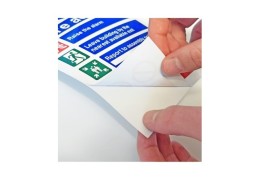
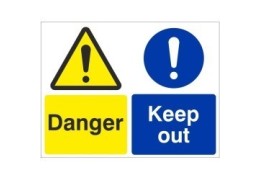
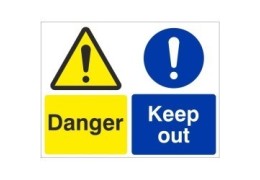
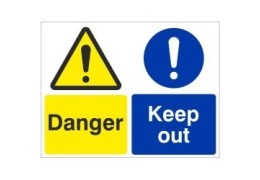

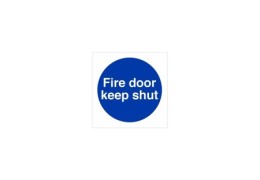

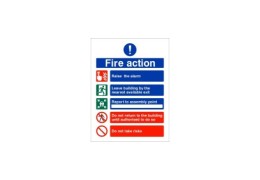



Latest comments